The village of Palombara Sabina, developed around the Savelli Castle, lies immersed in the greenery of olive and cherry trees at the foot of Mount Gennaro, in the “Parco Naturale Regionale dei Monti Lucretili.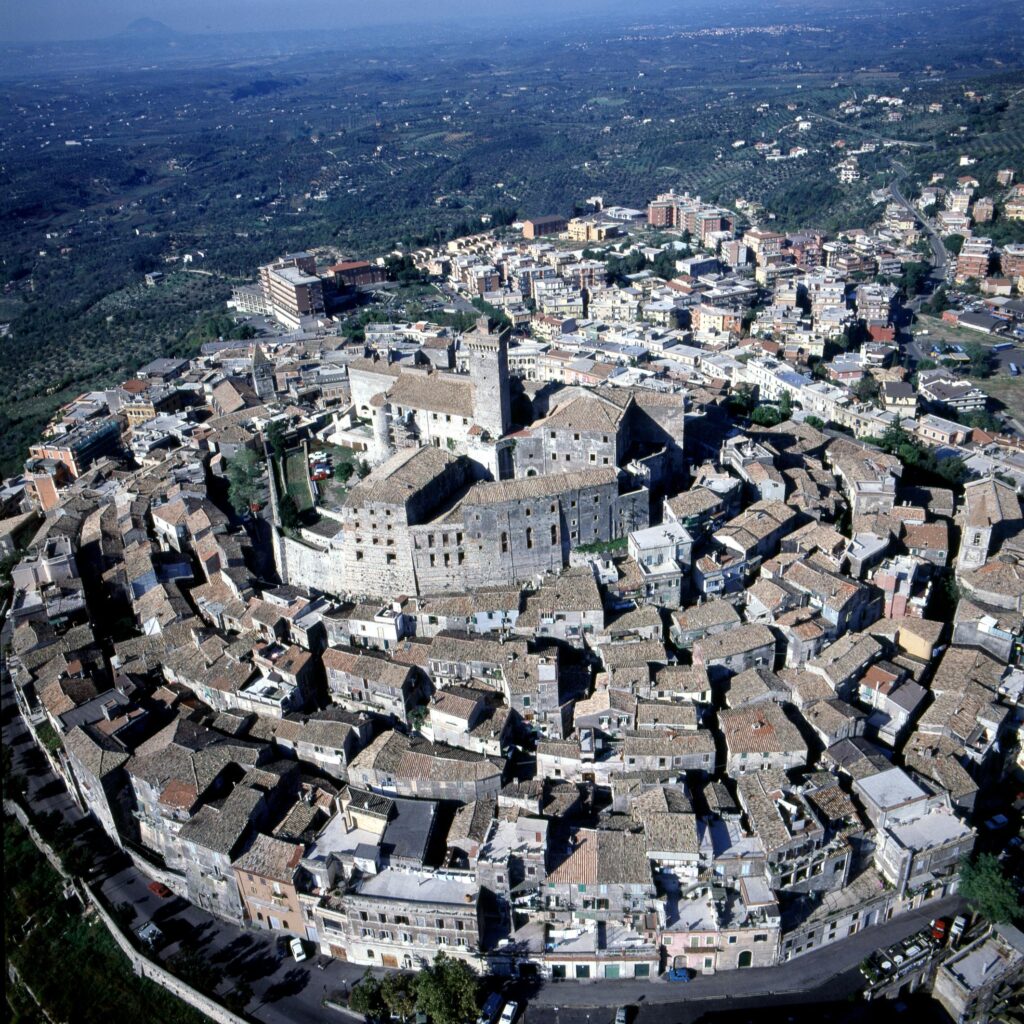 Called Cameria, or Regillum, in ancient times, it owes its current name to the breeding dovecotes, that are present here. Worth visiting is the historic centre, perched around the Savelli Torlonia Castle, and the Muro del Soccorso, an eighty-three-metre-long double covered walkway starting from the Rocca, with thirty-seven embrasures.
Called Cameria, or Regillum, in ancient times, it owes its current name to the breeding dovecotes, that are present here. Worth visiting is the historic centre, perched around the Savelli Torlonia Castle, and the Muro del Soccorso, an eighty-three-metre-long double covered walkway starting from the Rocca, with thirty-seven embrasures.
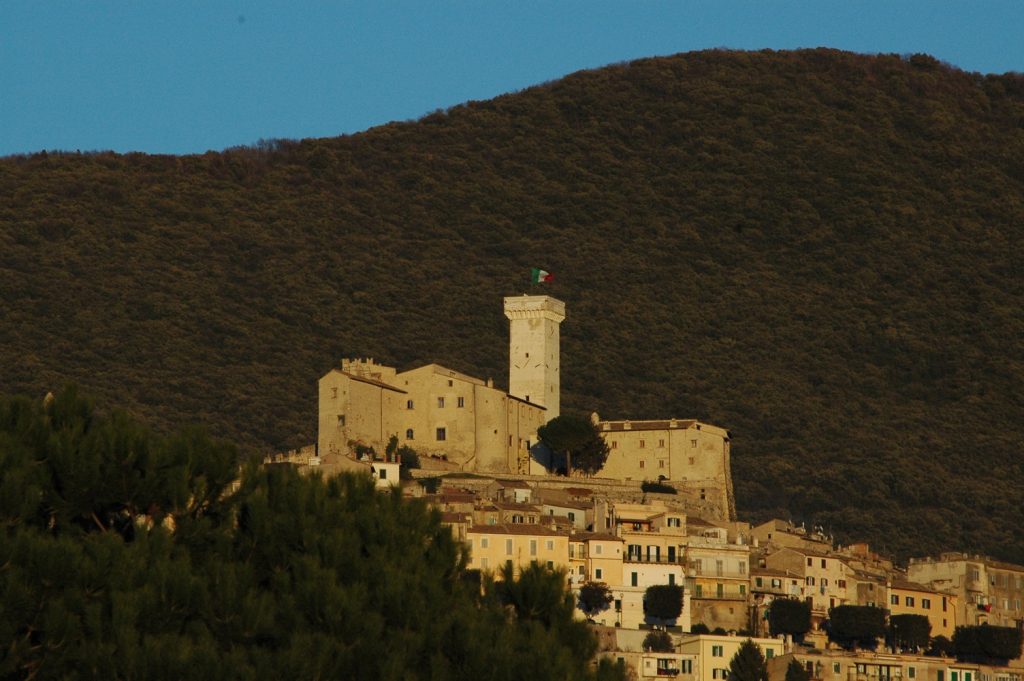
The Savelli Torlonia Castle – www.retedimorestorichelazio.it
The medieval Savelli Torlonia Castle, which dominates the town from the top of a hill, hosts over one hundred rooms on an area of about ten thousand square metres. At the end of the fifteenth century, the Savelli Family turned the castle into a Renaissance baronial residence. Within the walls, we can admire the Palazzo di Troilo, the Palatium degli Ottaviani from the tenth-eleventh century, and the Palazzo di Giacomo, as well as three courtyards, a chapel and four towers.
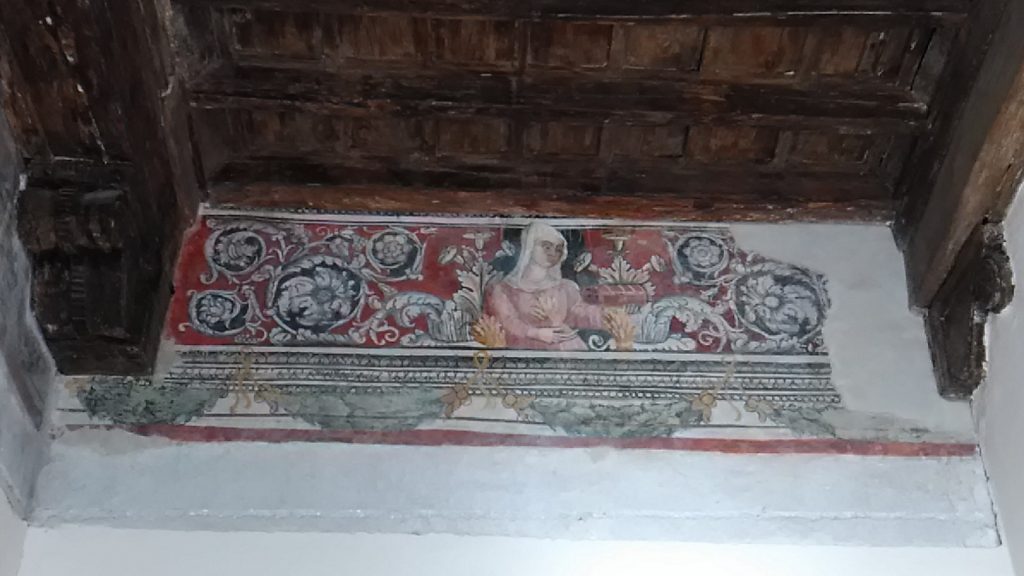
The Castello Savelli Torlonia, interiors – www.retedimorestorichelazio.it
The Savelli Castle boasts sixteenth century frescoes from the Raphael school, commissioned by Troilo Savelli, which portray ancient Roman heroes, such as Attilio Regolo. The ceiling of the study is decorated with grotesque cherubs that transform into acanthus leaves, while, in a second small study, allegories of the six liberal arts are represented (astronomy, music, rhetoric, arithmetic, geometry and dialectics).
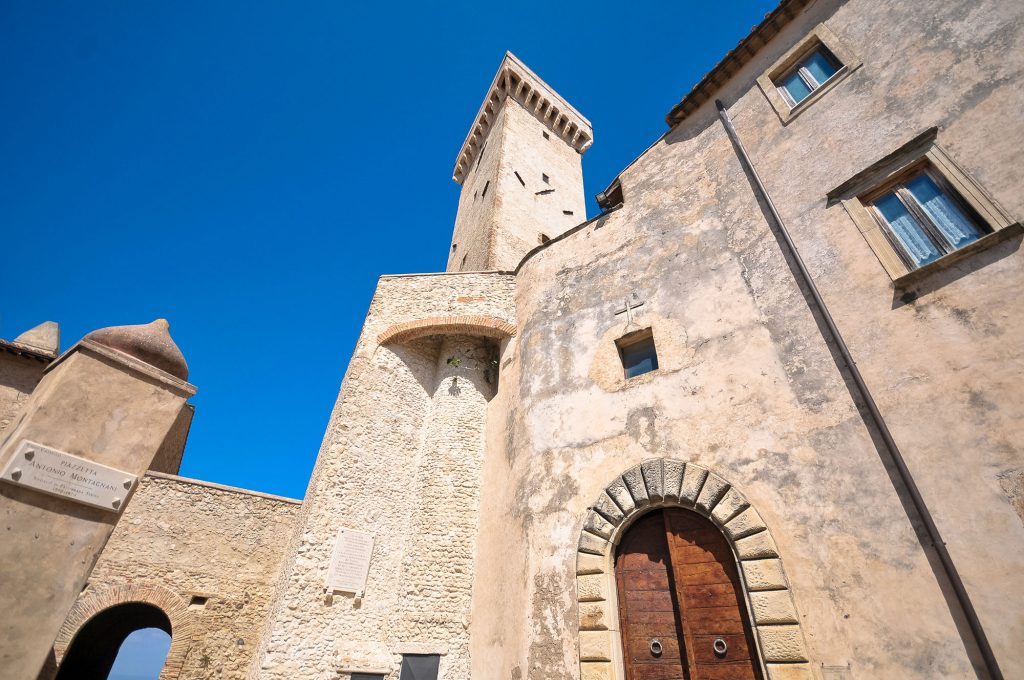
The Castello Savelli Torlonia – www.retedimorestorichelazio.it
At the end of the nineteenth century, the Castle became a municipal property and, at the beginning of the twentieth century, it served as a prison. Today’s Castle, listed among the Historic Homes of Lazio, houses a guesthouse, a kitchen, a conference room, event venues, and a hanging garden for weddings and receptions.
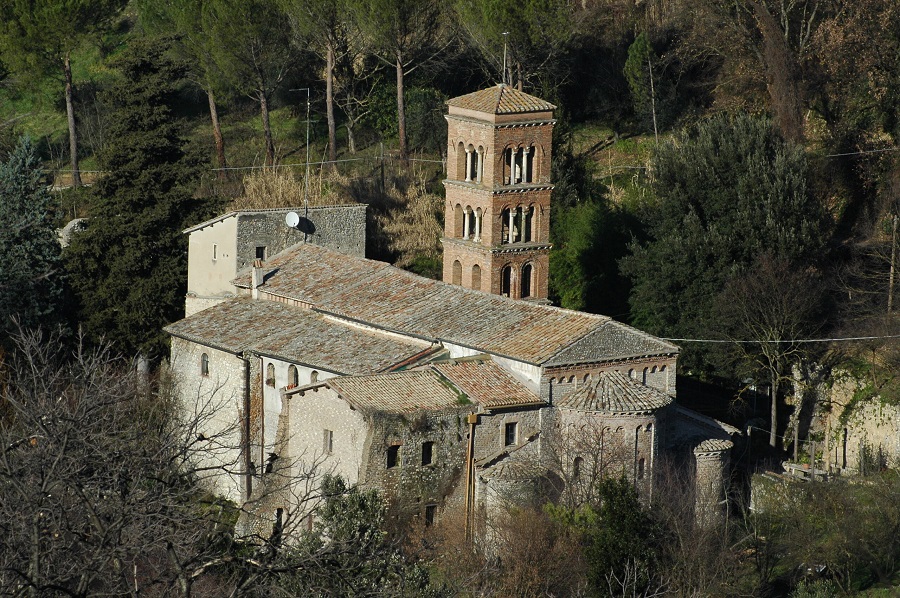
The Abbey of San Giovanni in Argentella – www.comune.palombarasabina.rm.it
About three kilometres from the town, immersed in the greenery, stands the Abbey of San Giovanni in Argentella, named after a spring which flows from the bottom of the valley directly into the basement crypt. The stream was considered miraculous in the past, so much that, on June 24, the feast of St. John the Baptist, locals used to bathe in its waters.
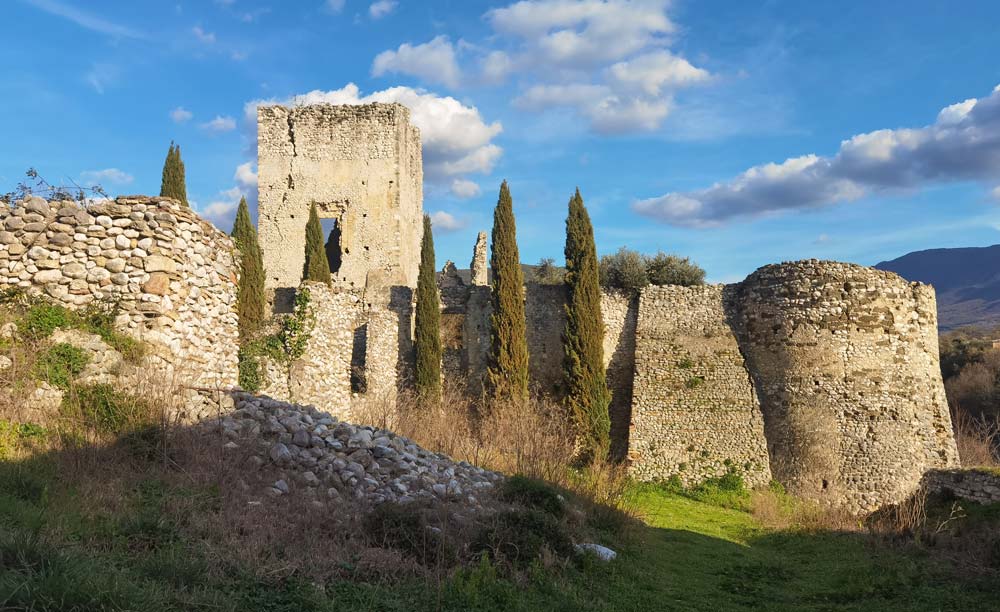
Stazzano Vecchia, the ghost town in Palombara Sabina
Halfway between Palombara Sabina and Moricone, lies the ghost town of Stazzano Vecchia. The village, developed around a castle from 1600, is only accessible through a door between the outermost tower and the Church of Santa Maria.
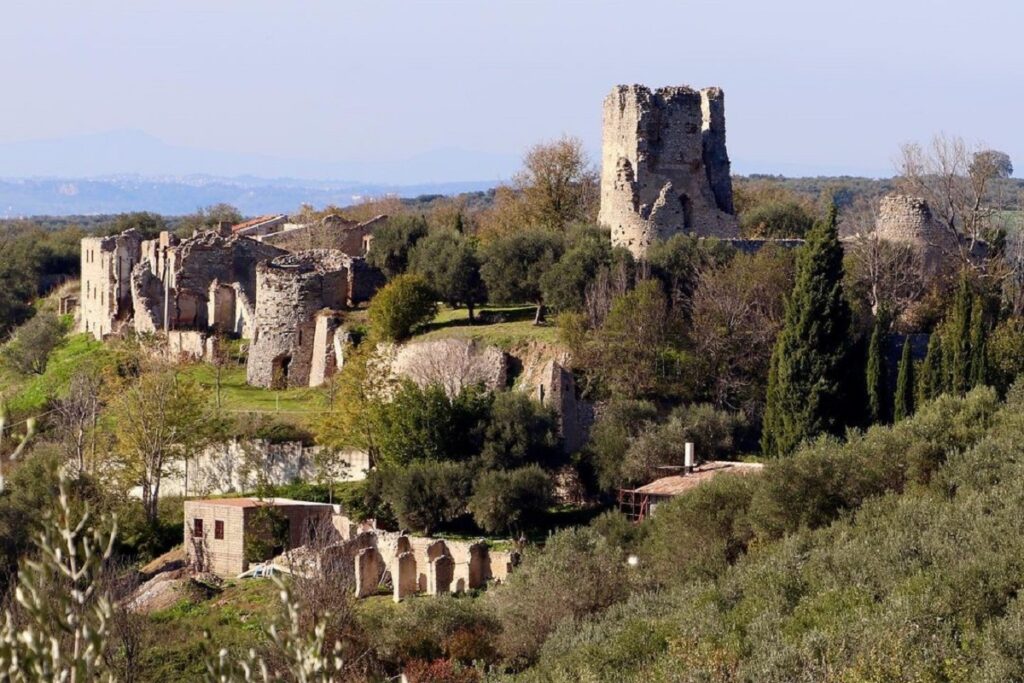
Stazzano Vecchia – www.www.beniculturalionline.it
After the earthquake of 1901, the village was abandoned, and the remains were employed to build a new village three kilometres away, Stazzano Nuovo. From the ruins of Stazzano Vecchia, located on a limestone spur, we can admire a stunning view of Mount Gennaro and Mount Soratte, while a gentle wind ruffles the branches of cherry and olive trees.
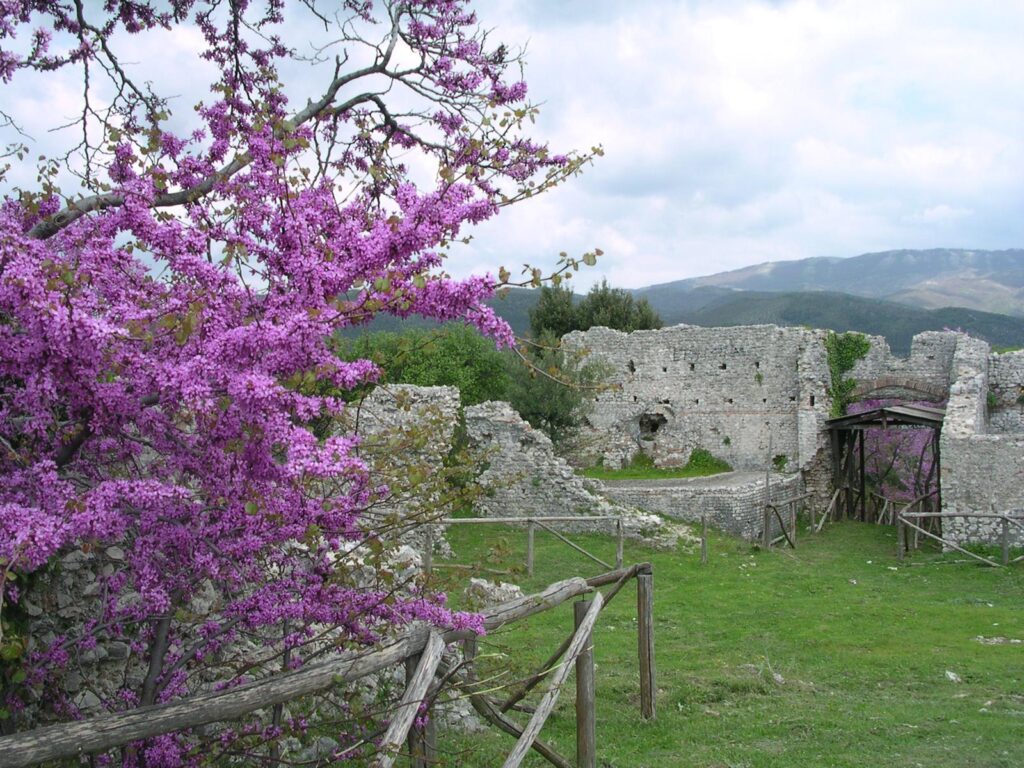
The ruins of the Castrum of Castiglione
The Castrum of Castiglione, or Castrum Castillonis, in the “Parco Naturale dei Monti Lucretili”, inhabited between 1200 and 1400 still preserves crenelated walls and a cistern.
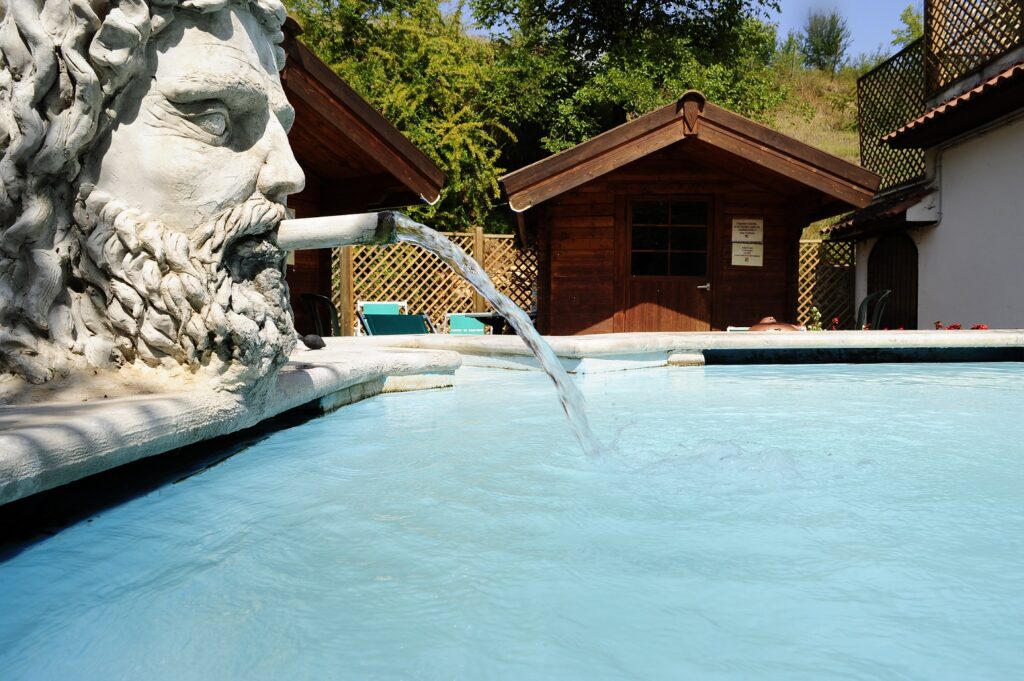
The Sabine Baths of Cretone
The Sabine Baths of Cretone, visitable from June to the end of September, host three large pools, included one for children, fed by sulphurous thermo-mineral springs.
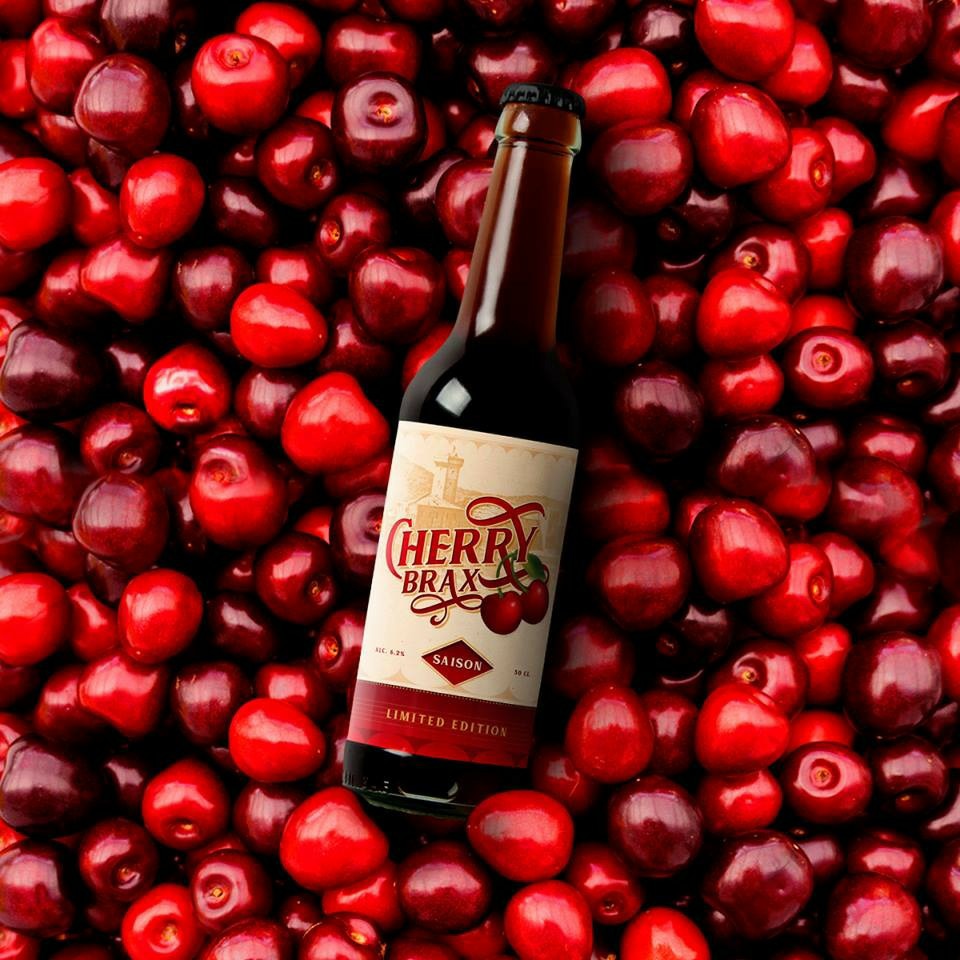
The cherry beer from Palombara
The Asian Ravenna cherry was already growing in the Tiber Valley at the time of the proconsul Lucullus but only spread throughout the area of Palombara Sabina a hundred years ago, and its sweet, pink pulp even inspired beer producers.
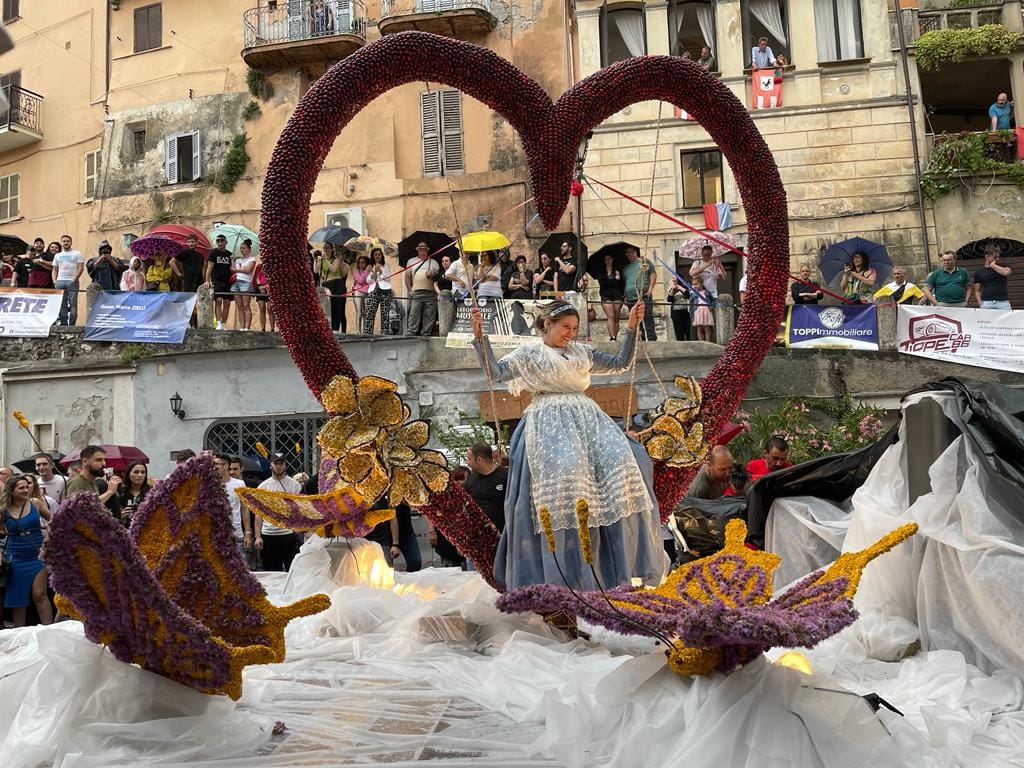
The Sagra delle Cerase in Palombara Sabina – facebook @sagradellecerase
The Sagra delle Cerase, the oldest cherry festival in Europe, has been celebrated in Palombara Sabina for almost one hundred years, with allegorical floats decorated with cherries and flowers, shows, music, and tastings.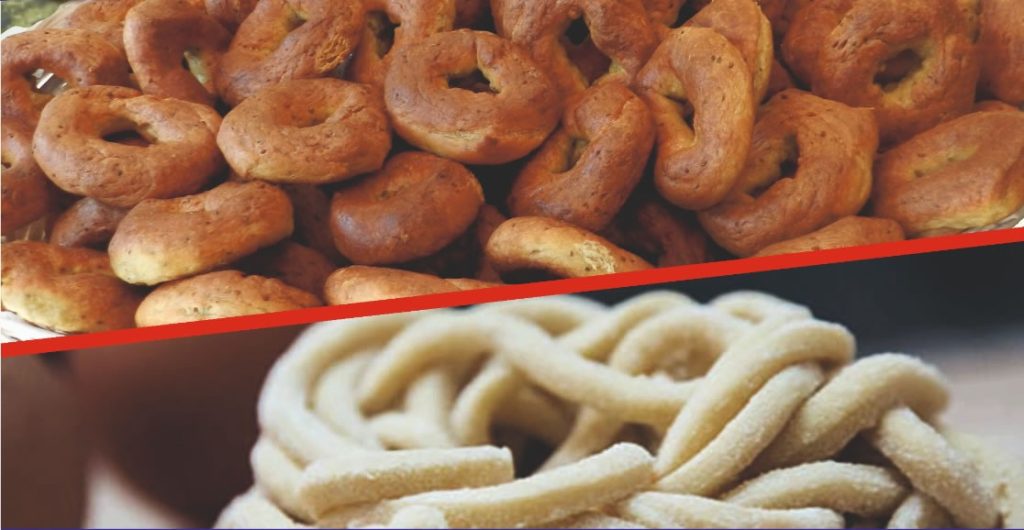 The Festival of the Ciammellocco and the Longarini takes place in early September in the hamlet of Cretone, during the renowned event “Un Borgo DiVino”, a tasting route of typical products. On the occasion, baking and cooking lessons are organized, as well as a competition for the best ciammellocco and longarini.
The Festival of the Ciammellocco and the Longarini takes place in early September in the hamlet of Cretone, during the renowned event “Un Borgo DiVino”, a tasting route of typical products. On the occasion, baking and cooking lessons are organized, as well as a competition for the best ciammellocco and longarini.
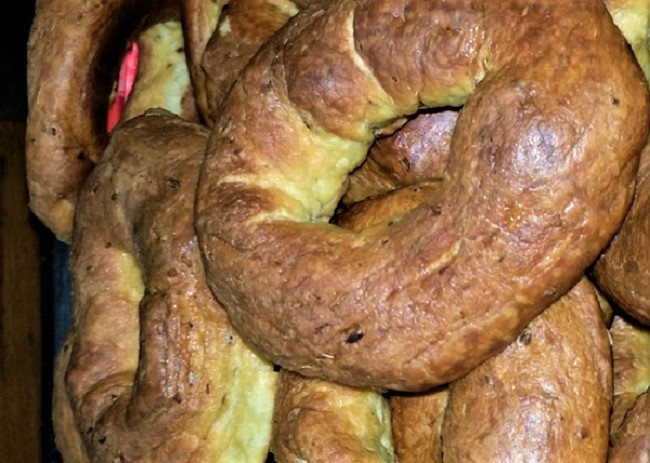
The Ciammellocco from Cretone
The ciammellocco has been prepared since the early 1900s with eggs, flour, anise, lemon and EVO oil from Sabina. Before being baked, this crumbly, not very sweet cake is cooked for a few minutes in water. It can be soaked in white wine or anise liqueur, a delight for the palate!

The Longarini from Cretone – www.arsial.it
Also typical of Cretone are the Longarini, egg pasta cut into 5mm thick spaghetti.
